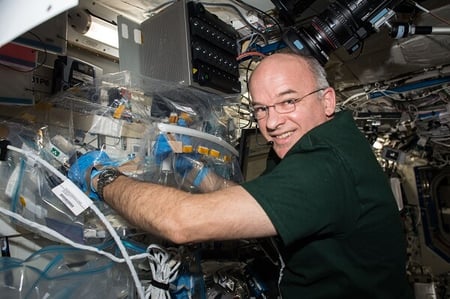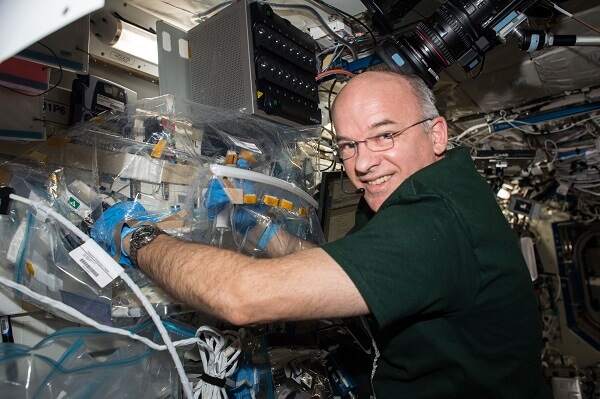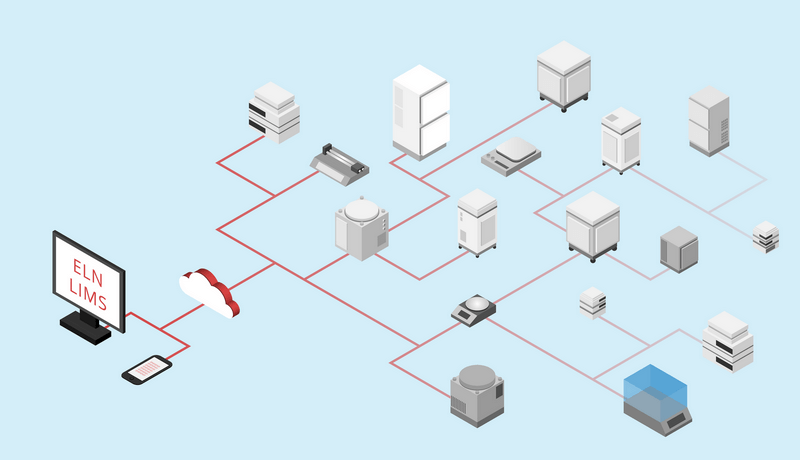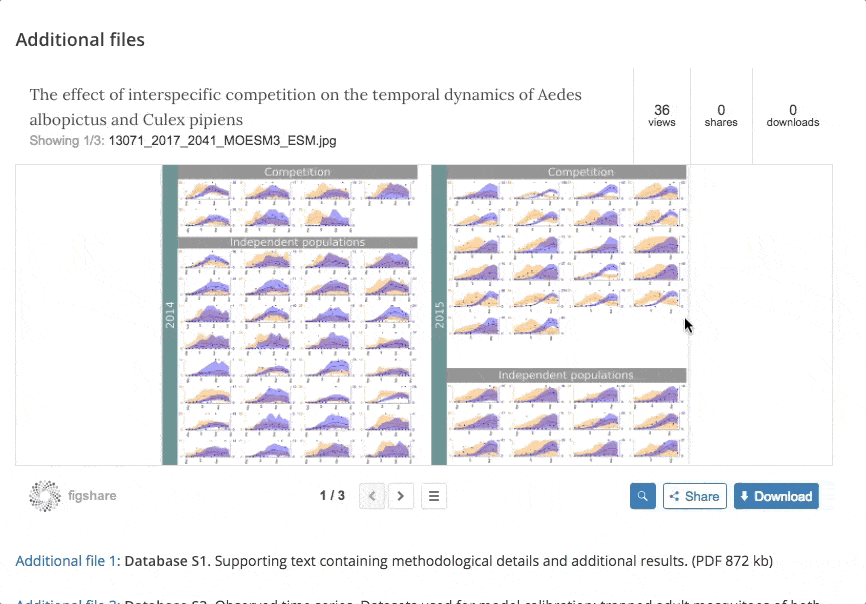PCR and qPCR made it to space. Did you know that currently a fully equipped sample-to-result molecular biology laboratory with PCR and qPCR instrument is orbiting the Earth? A few days ago, in the scope of NASA’s Expedition 47 aboard the International Space Station (ISS), astronauts performed the validation of WetLab-2 research platform which includes a qPCR instrument and on 18th of April 2016 astronauts performed the first ever DNA amplification in space by conducting a test run on miniPCR thermal cycler. The following day the Genes in Space-1 project started using the same PCR thermal cycler (see video). Molecular biology has officially made it to space!
 ISS Expedition 47 flight engineer works on the WetLab-2 gene research hardware. You can see a qPCR instrument in the top centre of the image. Credits: NASA
ISS Expedition 47 flight engineer works on the WetLab-2 gene research hardware. You can see a qPCR instrument in the top centre of the image. Credits: NASA
The goal of the Genes in Space-1 project is to determine whether PCR can be used to study DNA alterations aboard the ISS. It is known that in space, the human immune system’s function is altered, resulting in a decreased response to extracellular pathogens and a decreased ratio of interferon gamma to interleukin 10 (IL-10) produced by T-helper cells, which indicates a shift in how the body, and its T-cells, identify and respond to various kinds of pathogens (1, 2, 3). Previous research has shown that spaceflight can cause epigenetic changes in DNA, raising the possibility that these changes triggered by the space environment may be altering the established differentiation process of immune cells and causing the altered immune response observed in astronauts.
Currently a fully equipped sample-to-result molecular biology laboratory with PCR and qPCR instrument is orbiting the Earth.
Specifically, the goal of Genes in Space-1 project is to detect changes in methylation of DNA (cytosines) in cytokines and other genes with established methylation. Genes in Space-1 is a proof of concept, in which the same set of embryonic zebrafish DNA samples was sent to ISS, while simultaneously identical samples will be run under the same PCR conditions on Earth. The researchers are hopeful that the subsequent analysis will show identical results, indicating that PCR can be successfully and accurately performed in microgravity, opening up path to further experiments leading to a deeper comprehension of the epigenetic changes that occur in space.
They are using a gold standard technique, bisulfite conversion, to determine whether DNA is methylated. In short, this technique exposes the DNA to a series of reagents that convert unmethylated cytosines to uraciles, while the methylated cytosines remain unaffected. When sequencing DNA after bisulfite conversion the methylated cytosines will read as cytosines (C) and the unmethilated cytosines (converted to uraciles) will read as thymines (T). Thus we can detect the changes in DNA methylation patterns. Since a PCR instrument is much simpler to operate in microgravity than a sequencer the Genes in Space-1 project is rather using methylation-specific PCR (MSP) with miniPCR thermal cycler. This approach uses a set of two primers per target gene: a “methylated” primer set that contains cytosine (C) at methylation sites, and a “non-methylated” primer set that uses thymine (T) in place of C at methylation site.
In space, the human immune system’s function is altered, resulting in a decreased response to extracellular pathogens.
Up to now all molecular biology analyses (e.g. gene expression) of space-flown biospecimens had to be conducted post-flight-after living cultures or frozen or chemically fixed samples were returned to Earth from ISS. The WetLab-2 platform solves this problem as it includes all that is necessary to obtain data from samples directly aboard ISS. It contains a commercial qPCR instrument (Cepheid SmartCycler), a sample transfer tool for retrieving samples from culturing hardware and a set of fluidic modules to facilitate sample preparation work that will be done by astronaut crew working in a weightless environment. This platform was developed specially for microgravity environment. This means that ISS crew members can now extract RNA from multiple types of biological specimens in less than 30 minutes, and then perform gene expression analysis with a qPCR instrument.
Investigators using WetLab-2 will be able to analyse the data of a spaceflight experiment and immediately apply the results to possible subsequent runs of the experiment during the same flight mission. This will accelerate the pace of research on the ISS, making it much more comparable to research on Earth, where you do not have to rely on a rocket launch to obtain reagents and samples for your experiment.
NASA plans to use WetLab-2 for a broad range of life science investigations in space, such as analysis of genes that indicate infectious disease, cell stress, changes in cell cycle growth and development, and genetic abnormality. According to NASA the validation study of WetLab-2 was successfully concluded.
ISS crew members can now extract RNA from multiple types of biological specimens in less than 30 minutes, and then perform gene expression analysis with a qPCR instrument.
NASA (Space Biosciences Division at Ames Research Center) is continuing to conduct ground and spaceflight experiments (e.g. Genes in Space-1), as well as developing advanced research platforms for the ISS (e.g. WetLab-2) that will facilitate use of the laboratory by the scientific community to conduct increasingly sophisticated life science experiments in microgravity.
Inevitably, scientific experiments generate results. NASA decided to openly share this data and created GeneLab platform, a repository where all the data related to spaceflight missions (conducted in space or on ground) are openly available. It is worth taking a look.
By Matjaz Hren, PhD
Featured image: International Space Station (ISS). Credits: NASA
Further reading:
WetLab-2: Real-time Quantitative PCR tools for the International Space Station National Laboratory
[tw_callout size="waves-shortcode" text="" callout_style="style2" thumb="" btn_text="Republish the article" color="#37a0d9" btn_url="https://scinote.net/blog/republish/" btn_target="_blank"]





